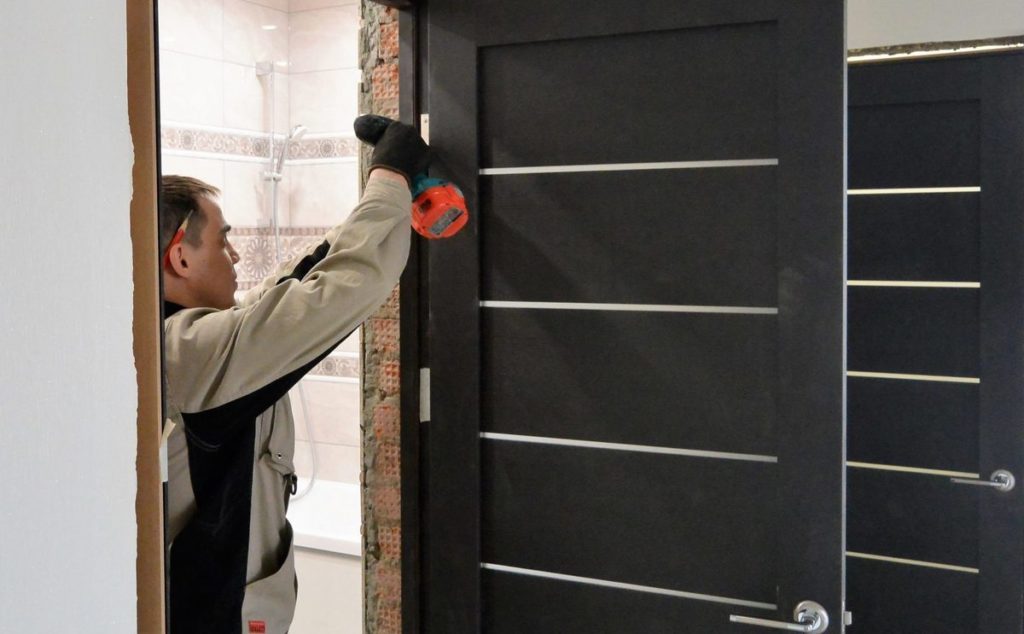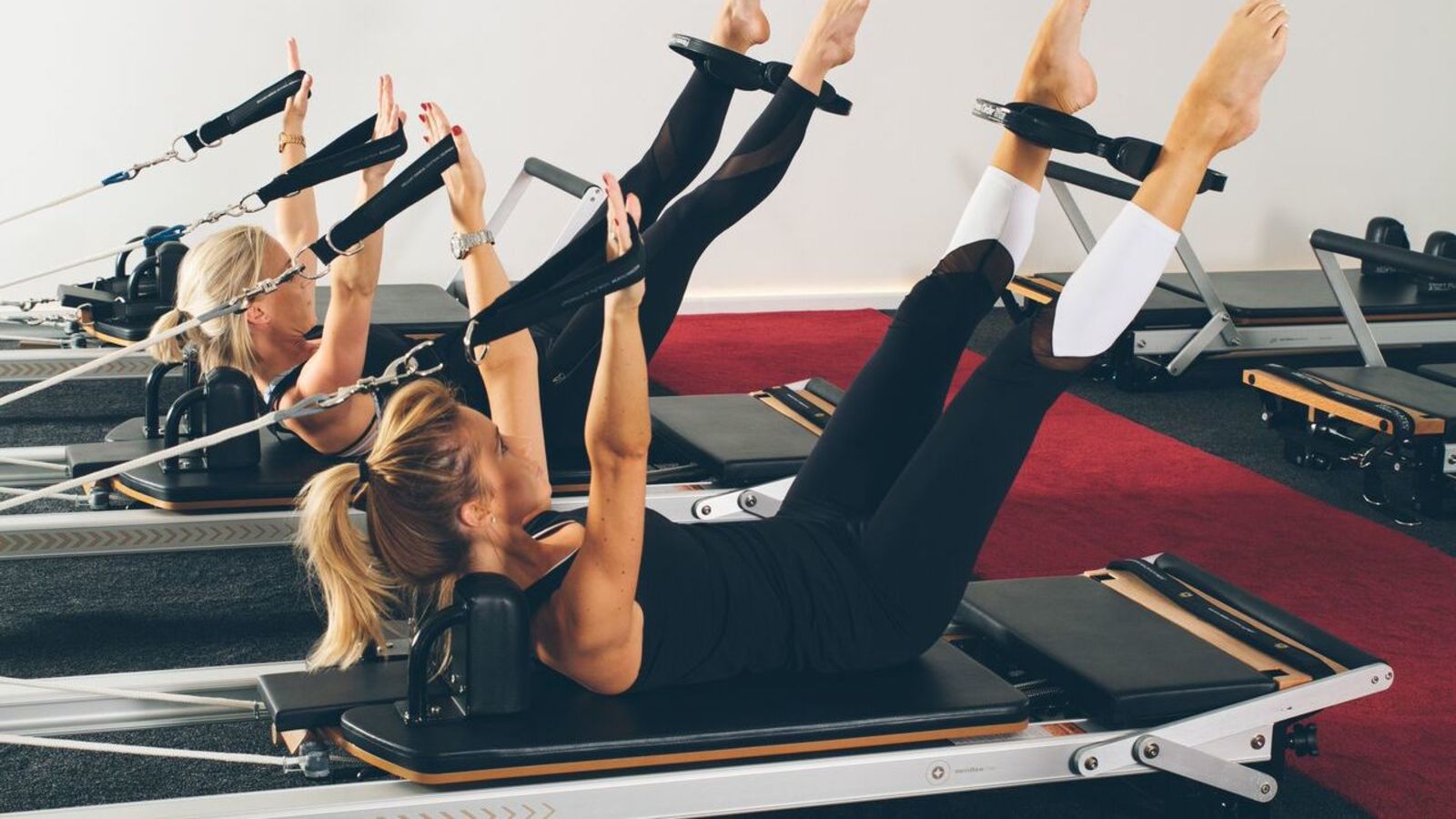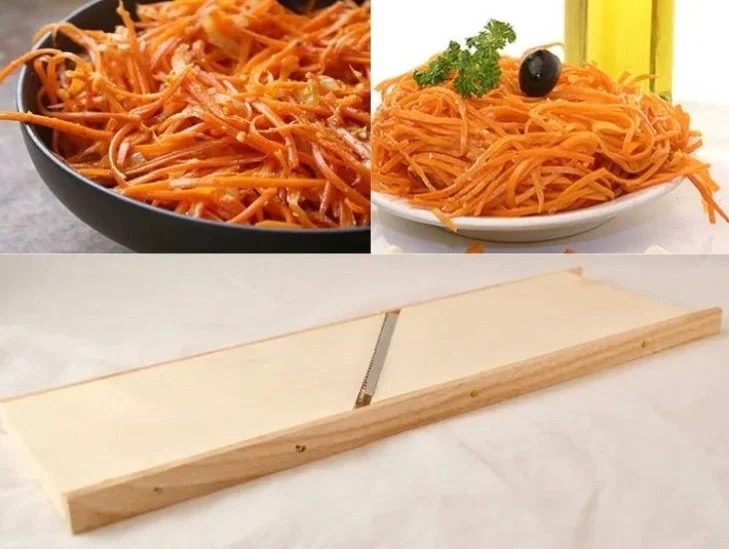Rating of the best manufacturers of fittings for interior doors for 2022

It is generally accepted that the entrance doors are a barrier between the house and the street, i.e. external and internal space, while interior doors divide the interior into separate personal spaces for each family member. From this it is clear that a person, by virtue of his individuality, will not be able to live without such an internal barrier. And as a continuation of his individuality, the fittings of the interior door can serve.
The modern market for manufacturers of accessories for interior doors is not very large, if we talk exclusively about high-quality brands, which can be counted a little more than a dozen. All of them are Western European residents, Russian firms are poorly represented in this market.Since it is necessary to competently understand the smallest differences, on which the difference between similar products should form, you should study all the subtleties regarding these accessories.

Content
- 1 Interior door fittings - general information
- 2 Types, properties and features of the placement of interior fittings
- 3 Properties and features of the main elements of interior fittings
- 4 Auxiliary elements
- 5 Difficulties of choice
- 6 Rating of the best manufacturers of fittings for interior doors for 2022
- 7 Instead of an epilogue
Interior door fittings - general information
By itself, an interior door is a rectangular sheet, most of the properties of which will be determined by its fittings, that is, auxiliary parts and details. Previously, only entrance groups were provided with auxiliary elements, and for internal doors, the presence of locks and decoration was considered an unnecessary luxury. In our world, the purpose of door fittings seems to be a combination of maximum comfort for the tenant, coupled with a harmonious overall design style and the design of the entire living space as a whole.
Unlike elements of the entrance group, interior door fittings are always in sight.With its help, it is especially bright to emphasize dissonance (or vice versa - harmony) in color both with the canvas itself and with its individual elements. Therefore, most of the auxiliary door elements are supplied by the manufacturer immediately in a single set, and they are made in the same style and color scheme.
Modern fittings for interior decoration are divided into two categories:
- Necessary - without it, the sash will simply be impossible to operate;
- Auxiliary - it is used to maintain the overall aesthetics of the style of the home and additional functionality.
As an example, we can cite the fact that handles and hinges can be attributed to the first category, and limiters, closers, and locking devices to the second.
Types, properties and features of the placement of interior fittings
As mentioned above, the items under consideration include such accessories, without which the functioning of the door will be either impossible, or inferior, or devoid of aesthetics and style. If we give the most complete list of such elements, then it may include:
- Locks;
- Pens;
- Latches;
- hinges;
- closers;
- Limiters.
In most cases, the quality of these devices will be affected by the material they are made from. Any door accessory should not only look beautiful, but also fully perform the functionality assigned to it, moreover, for a long period of time.
Usually, the following materials are used for interior door elements:
- aluminum alloys;
- Stainless steel;
- Brass (and its alloys);
- Zinc (and its alloys);
- Reinforced plastic and plastic.
Also, an important role for the internal door element will be played by its coating, on which not only the appearance, but also the service life depends. The following methods can be used for processing:
- Galvanizing;
- Coloring with special powders;
- Oxidation;
- grinding;
- Anodizing;
- Chrome plating;
- Polishing.
A distinctive feature of interior fittings is that it is less massive and more elegant than the one used for entrance groups. This circumstance is due to the fact that the fittings are located indoors and are not affected by external negative factors (for example, weather conditions). In any case, one of the tasks that interior door fittings perform can be described as "the need for a harmonious combination of the design of the door leaf with the overall interior." Therefore, when installing accessories, consider:
- Material and size of the door leaf;
- Comfort during operation;
- functionality and durability;
- Resistance to mechanical stress and corrosion;
- The general ability to fit into the style of the room.
IMPORTANT! Most professional designers believe that power elements (closers, locks and hinges) must certainly be made of metals and alloys, but other accessories can be made of any material, even fragile plastic.
Properties and features of the main elements of interior fittings
Door hinges
Roughly, they can be divided into:
- Detachable and one-piece;
- Mounted (overhead) and screwed;
- Unilateral swing and universal.
One-piece hinges are much less convenient than detachable ones.Here you can give a simple example: when you want to bring a large item (furniture cabinet or table) into the room, then the presence of detachable hinges will allow you to remove the sash from the doorway and put it aside so as not to damage it when skidding. Detachable loops have two variations when:
- The pin of one half of the loop enters the hook with the groove of the second (individually, they are available as “cards”);
- The two halves of one hinge, having lugs, are attached to each other by means of an axial pin, which can be extended.
For the first option, it will be enough to lift the canvas up to dismantle it. But with the axial pin, things are more complicated: during operation (opening / closing the door), the pin is deformed (it simply wears out), therefore, to remove the sash, you will have to unscrew the fasteners of one of the hinge halves. If the pin is still worn out, then when reinstalling it, it will need to be replaced, because the previous (old) element is unlikely to provide a decent connection reliability.
Hinged and screw-in hinges differ from each other in design features and the method of fastening to the jamb and canvas. The iron plates of the hinged samples will require cutting small grooves for them in the door end and in the jamb. For screw-in models, this is not required, because each half of them has a rigidly installed pin with a screw. Holes are drilled under the pins in the jamb and the end of the sash, where the screws are then screwed in.
In addition, hinged models, in addition to their special visibility, have another problem associated with replacement in case of breakage - in such a situation, you will have to look for hinges that will completely match the previously installed ones in shape and size.
Universal hinged models can be mounted on the sash, regardless of the direction of opening the door (“toward” - “away from you”) - they have an expanded specialization. However, a connector is not provided in the universal hinges, and therefore it is simply impossible to temporarily remove the door leaf without fully dismantling such hinges.
Door handles
Naturally, the door handle is also the most visible and (in most cases) essential piece of furniture. Among the variety of types of pens, it is possible to distinguish three of their main types:
- Stationary handles-brackets;
- Falevye (push);
- Knobs (handles-balls.)
Stationary models are the oldest and most common type of interior door hardware. Their peculiarity is that they have no connection with the door lock and are fixed only on the canvas in a fixed and rigid position. To open/close the door with a stationary handle, you just need to grab it tightly and pull it towards you or push it away from you. They have a characteristic U-shape, for which they were nicknamed "brackets".
Push models have the simplest lock with a latch latch - when you press such a device, the inner bolt (tongue) will move out of the groove in the jamb and the sash swings open. When the pressure is released, the spring will return the latch back, and the outer part of the device will return to its original position. In pressure samples, two design variations are used:
- With solid nozzles;
- With separate nozzles.
In the latter version, a round socket-nozzle installed between the leaf and the handle does not have a direct connection with the handle, and is fixed with screws through the sash to the lining on the reverse side.In the first variant, the overlay has a rectangular shape and large dimensions with rounded corners, and in addition to holes for a pin with a square section that secures and connects the handles to each other on both sides of the door, there is a hole for the cylinder mechanism (“larvae”) of the lock. Naturally, for interior door panels, it is preferable to use handles with separate socket-linings.
In spherical models of handles-knobs, the mechanism of operation is very similar to the push, but instead of the “pressing” action, you need to carry out the “turn” action. For knobs, there are three main variations of the mechanism:
- Simple snap;
- Snap-in with one-sided fixation;
- Locking and locking.
It should be noted that with all methods of fixing it is possible to block only the movement of the handle, while the latch mechanism remains free. Simply put, with the handle locked, the door can be opened using the small hole directly below it, by inserting a thin needle, for example. Knobs themselves are very easy to install, easy to use, and their tapered, conical or spherical shapes look great in various interior styles. However, before installing the knobs, it is worth considering the fact that later it will be impossible to change the knob to a different type. This is due to the fact that one of the holes for the rotary model made in the door leaf will have a size of at least 50 millimeters in diameter (and this is not structurally suitable for other types of handles).
IMPORTANT! In Russia, the technical conditions for the production and installation of knobs and pressure models are regulated by the State Standard No. 5089 of 1997.
Auxiliary elements
These may include:
- latches - they are intended for interior doors with two leaves and their main task is to fix on one side. Their design is very simple - the crossbar moves manually up and down by means of a short handle. Latches are mortise, built-in and overhead;
- Stoppers (travel limiters) - they are made of metal and they are used to prevent the full opening of the door leaf, in order to prevent it from hitting an adjacent adjacent wall or a nearby object. In order to prevent the occurrence of all kinds of scratches when the stopper interacts with the sash, the contact side of the stopper is equipped with a special bumper that softens the blow. Depending on the installation location, the stopper can be installed on the floor or wall;
- closers - according to their design, they are divided into knee and linear, and according to the method of installation, they can be frame (internal), floor and top. Designed to dampen the door when it is opened and to automatically close it. Usually, such models can adjust the closing / opening speed, which will affect the locking speed of the lock, if the door is equipped with it. There are models that can fix the door in the “open” position, which is very convenient for bringing in / taking out large objects through the doorway. Depending on the size and weight of the door, as well as the degree of strength of the spring, closers are divided into seven classes - from EN-1 to EN-7.
Difficulties of choice
The price of interior door fittings is mainly formed by two indicators - this is the material of manufacture and production technology. Simply put, the more complex the technology of manufacturing an accessory and the more expensive the material from which it is made, the higher the price will be.The cheapest products are made from brass and silumin, wood and plastic, while the more expensive ones are made from bronze and steel alloys.
Choosing hinges - it is necessary to pay attention to the distance of the gap between their two halves. To do this, you just need to fold them, pointing at each other - the ideal option would be when the gap is not observed at all. For interior doors with a large mass, polished brass hinges are perfect. It is worth remembering that nickel-plated or chrome-plated products are poorly resistant to mechanical stress, moreover, over time they lose their original color.
Choosing pens - first, it is worth determining their comfort of fitting with the palm of your hand and pleasantness in tactile terms, because you will often have to contact them. The low weight of the product, coupled with its low cost, in most cases means that the coating may soon be worn out, and the body may be destroyed. The best options for interior solutions will be brass or steel models with double or triple paintwork. In general, the cost of push-type models will be extremely dependent on the material and subtleties of design, so it is preferable to use knob options. In any case, the pressure test specimen must meet the following specifications:
- Have a smooth ride without any difficulty;
- When released, the bolt should return to its original position very easily;
- When turning the product, even by 25-30 degrees, the lock bolt is completely retracted inside.
Choosing a latch - in cases where it is supposed to be installed on a frame door with a thickness of up to 25 millimeters, it is necessary to choose an overhead model that does not require cutting directly into the canvas.Mortise models should be installed only on massive doors, because they will be able to transfer the insert, which weakens the entire door frame.
Choosing Limiters - here you should mainly pay attention to the thickness of the metal of the product and the thickness of the bumper lining. The case made of thin iron may break during a strong blow, and a thin gasket will not be able to protect the door from mechanical damage.
Choosing a door closer - in this case, the material of manufacture, the mass and dimensions of the door itself will play a greater role, because the heavier and wider its leaf, the more power the closer will have to have. First of all, you should pay attention to the technical indicators of the closing speed and the opposing braking force when opening. The comfort of a person passing through the opening before closing directly depends on the first (whether he should hurry or not), and the necessary amount of muscle strength that a person will need to apply to reopen it depends on the second.
IMPORTANT! Professionals recommend purchasing sets of accessories at the same time as buying interior doors. So it will be easiest not to make a mistake with both the technical parameters and the general style.
Thus, in the market for these accessories, there are long-established brands (mainly from Italy), which include:
- "M.V.S.";
- "Fuaro";
- "Armadillo";
- "Adept";
- "Mandelli";
- "Mariani".
From a German manufacturer, we can advise:
- "Gopp";
- "Eco";
- "Yado";
- "Schuring".
NORA is the leader among Russian brands.
Rating of the best manufacturers of fittings for interior doors for 2022
Italian firms
3rd place: "Renz"
This Italian office has become known in the vastness of Russia and the CIS due to the introduction of high-quality door accessories to the market. Hinges deserve special attention, which are characterized by simple installation, sufficient compactness and aesthetic design. An optional advantage is that the manufacturer provides an extended warranty for its products, which once again proves the good quality of the product.

- Compactness of accessories;
- Expanded Warranty;
- Execution quality.
- Not easy to find in Russian retail.
2nd place: "Mandelli"
This Italian brand is popular with Russian buyers due to its flexible pricing policy. From this it is clear that its products are aimed at a wide consumer circle. Among the many positive aspects, it is possible to single out a wide variety of samples of interior door elements, and the variability of their design causes only positive emotions. Separately, it is worth noting that the supplied lines of the goods in question may well be interchangeable. Some models are suitable for both input and internal groups.

- Excellent pricing policy;
- Wide range of products;
- Interchangeability.
- Not detected.
1st place: "Armadillo"
"Armadillo" is a world famous company whose products are mainly focused on door accessories and everything connected with them. Their products are made from high quality materials and production technologies follow step-by-step ("step-by-step") modern innovations. However, with a very high manufacturability of the production process, the goods are exhibited at adequate prices.Separately, it is worth noting a certain pretension of products to a high design level.

- Application of innovative technologies;
- Manufacturing quality;
- Easy installation of all elements.
- Short warranty.
German firms
3rd place: "Hoppe"
This company is characterized by the reliability and durability of its products, whether it be locks, handles, limiters and hinges. All products are made from high quality materials. The body of any element is treated with a protective compound in order to prevent corrosion. All models are resistant to moisture and mechanical stress. The only disadvantage for this company is that it has not yet received a corresponding certificate from the Russian state authorities, so products can only be purchased through online stores.

- Reliable and durable products;
- The use of quality materials;
- Unique coverage.
- A small number of authorized outlets in Russia.
2nd place: “Jado”
This German company is engaged in the production of doors of any format and all accessories for them. There are dozens of types of hinges in the assortment, with different coatings, and differing in design and appearance. All manufactured goods are tested in the factory laboratory. Quality control (QA) and extended warranty do not allow fixtures to fail earlier than planned. The only reproach towards this company may be that they do not produce hinged hinges.

- Careful quality control;
- Adequate prices;
- Relatively wide range of accessories.
- Do not produce "canopies"
1st place: "Shuring"
This German manufacturer has earned special popularity among Russians. Its products are widely available and are of high quality. The product range contains all nomenclature interior door items made of various materials and with various coatings. All products are distinguished by a neat appearance and are able to satisfy any consumer request, both in terms of price and the relative quality of production materials (up to reinforced plastic).

- Affordable prices;
- A wide range of;
- Manufacturing accuracy.
- Not detected.
Russian firms
3rd place: APECS

The door hardware in question is already famous among the Russian buyer for its safety, reliability and ease of installation. The model range for interior variations is replete with the presence of quality elements. This is facilitated by the division of a number of products into classes:
- "Economy";
- "Standard";
- "Premium".
As a standard, the manufacturer uses only branded steel for the manufacture of his goods.
- Adequate cost;
- Qualitative differentiation of classes;
- Reliability.
- Not detected.
2nd place: "ONYX"
The production of this company is located in Podolsk, where Italian and German materials are used for the manufacture of all interior devices, which is consistent with the existing license. The present assortment of the manufacturer consists of three complete collections (full interior design) and 75 individual elements. Innovative technologies are used in production, such as: mirror and photo printing, engraving and artistic painting.At the same time, services are provided for building up interroom soundproofing.

- Probably the best value for money;
- Use of the latest technologies;
- The presence of additional sound insulation and thermal protection.
- Not detected.
1st place: NORA
This well-known Russian brand has long specialized in hardware and locks. The geography of its deliveries has long gone beyond the CIS. In any case, the popularity of manufactured products for interior doors is determined by a successful combination of ergonomics, style and quality. All element parts come with a 5-year warranty. In turn, an adequate cost attracts a potential consumer.

- Adequate cost;
- Availability of a long-term guarantee;
- Reliability.
- Not detected.
Instead of an epilogue
As a result of the analysis of movements in the market of the manufacturers in question (not taking into account the level of capitalization of Western firms in this area), the following was established: the Russian consumer prefers samples of domestic production, not wanting to overpay for their QUALITY Western European counterparts. In principle, this trend is not without meaning, because why overpay for something that works so well. (?!) Here, the main part of the competition is created by Asian manufacturers.
new entries
Categories
Useful
Popular Articles
-

Top ranking of the best and cheapest scooters up to 50cc in 2022
Views: 131650 -

Rating of the best soundproofing materials for an apartment in 2022
Views: 127689 -

Rating of cheap analogues of expensive medicines for flu and colds for 2022
Views: 124518 -

The best men's sneakers in 2022
Views: 124031 -

The Best Complex Vitamins in 2022
Views: 121938 -

Top ranking of the best smartwatches 2022 - price-quality ratio
Views: 114979 -

The best paint for gray hair - top rating 2022
Views: 113394 -

Ranking of the best wood paints for interior work in 2022
Views: 110318 -

Rating of the best spinning reels in 2022
Views: 105328 -

Ranking of the best sex dolls for men for 2022
Views: 104365 -

Ranking of the best action cameras from China in 2022
Views: 102215 -

The most effective calcium preparations for adults and children in 2022
Views: 102011









